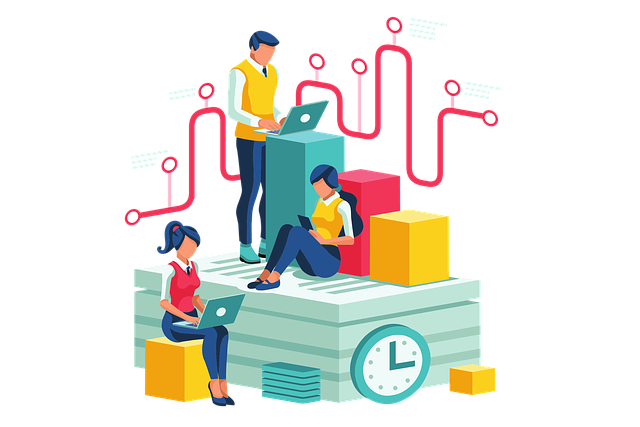AI seafood restaurant staff scheduling intelligence is transforming sushi bar operations by optimizing workforce allocation through advanced algorithms that analyze historical data on customer demand, staff performance, and shift preferences. This technology cuts costs, ensures adequate staffing during peak hours, enhances customer satisfaction, and fosters a sustainable work environment, making it a key differentiator in the competitive sushi bar landscape. AI competitor analysis for sushi bars is crucial for success, providing insights into rivals' pricing, menu items, customer demographics, and social media sentiment, enabling data-driven decisions for menu optimization, pricing adjustments, and targeted marketing campaigns. By implementing AI-powered staff scheduling, sushi bars can optimize operations, enhance customer satisfaction, and stay ahead of the curve in a competitive culinary landscape.
“Revolutionize your seafood restaurant’s operations with AI staff scheduling intelligence. This cutting-edge technology is transforming the way sushi bars manage their teams, ensuring optimal staffing levels and enhanced customer experiences. In this article, we explore the power of AI in sushi bar competitor analysis, unveiling strategies to optimize staff allocation. Discover how AI can streamline scheduling, improve efficiency, and provide valuable insights into market trends, giving your restaurant a competitive edge in the age of AI competitor analysis for sushi bars.”
- Understanding AI Seafood Restaurant Staff Scheduling Intelligence
- The Role of AI in Sushi Bar Competitor Analysis
- Benefits and Implementation Strategies for AI-Powered Staff Scheduling
Understanding AI Seafood Restaurant Staff Scheduling Intelligence

AI seafood restaurant staff scheduling intelligence is transforming the way sushi bars and other eateries optimize their workforce. By leveraging advanced algorithms, these systems analyze historical data on customer demand, staff performance, and shift preferences to create intelligent schedules that minimize labor costs and maximize operational efficiency. This isn’t just about saving money; it’s about ensuring adequate staffing during peak hours, enhancing customer satisfaction, and fostering a sustainable work environment.
In the competitive landscape of sushi bars, where AI is increasingly becoming a differentiator, competent analysis becomes crucial. Understanding consumer behavior patterns and seasonal trends helps in forecasting demand accurately. This allows restaurant managers to schedule staff accordingly, preventing overstaffing during slow periods and understaffing during busy times when an AI competitor analysis for sushi bars reveals peak customer flows.
The Role of AI in Sushi Bar Competitor Analysis

In today’s competitive culinary landscape, especially within niche segments like sushi bars, understanding market trends and competitors is paramount for success. Artificial intelligence (AI) plays a pivotal role in enhancing this process through advanced competitor analysis. By leveraging AI algorithms, sushi bar owners can gain valuable insights into their rivals’ pricing strategies, popular menu items, customer demographics, and even social media sentiment. This data-driven approach allows for informed decisions about menu optimization, pricing adjustments, and targeted marketing campaigns.
AI’s ability to process vast amounts of data swiftly enables businesses to identify trends and patterns in consumer behavior. For sushi bars, this means recognizing what sets them apart from competitors—be it unique ingredients, innovative rolls, or exceptional service. With AI competitor analysis, sushi chefs and restaurateurs can stay ahead of the curve, ensuring their establishments remain destinations of choice for seafood enthusiasts.
Benefits and Implementation Strategies for AI-Powered Staff Scheduling

Implementing AI-powered staff scheduling in seafood restaurants, particularly sushi bars, offers significant advantages that can enhance operational efficiency and customer satisfaction. By leveraging advanced algorithms, these systems can analyze vast amounts of historical data, including sales trends, peak hours, and employee availability, to create optimized staffing plans. This ensures that each shift is adequately staffed, minimizing labor costs and maximizing productivity.
When integrating AI scheduling into your sushi bar operations, start with a comprehensive AI competitor analysis. Evaluate how other restaurants in your industry are utilizing similar technologies and identify best practices. Collect and prepare relevant data, such as sales records, customer feedback, and employee performance metrics. Train the AI model using this data to learn patterns and make accurate predictions for staff allocation. Gradually implement the system, providing training for both managers and employees, ensuring a smooth transition and maximizing the benefits of AI-powered scheduling.
AI seafood restaurant staff scheduling intelligence is a game-changer, offering efficient solutions through advanced algorithms. By leveraging AI for competitor analysis in sushi bars, businesses can make data-driven decisions and stay ahead of the market. Implementing AI-powered scheduling strategies not only optimizes labor costs but also enhances customer experiences by ensuring adequate staffing during peak hours. Embracing these technologies is a crucial step towards revolutionizing the hospitality industry, providing both owners and diners with substantial benefits.
